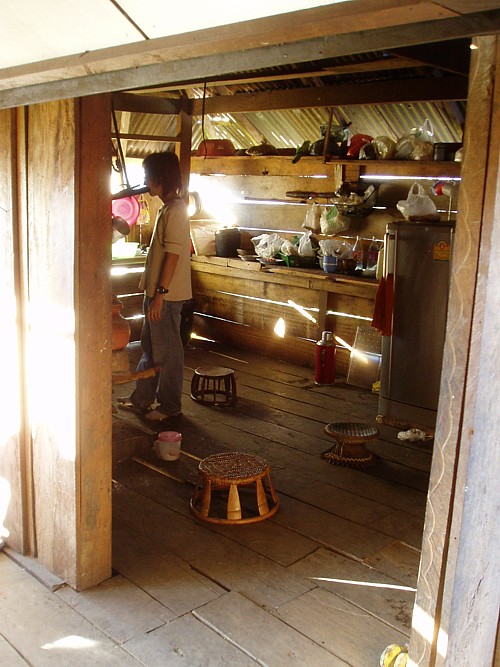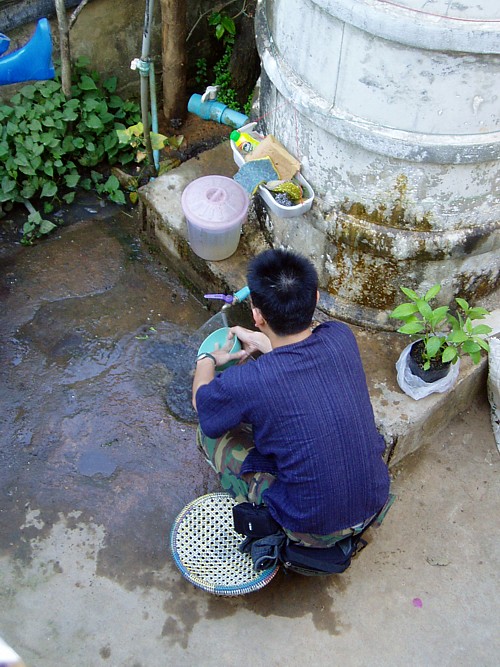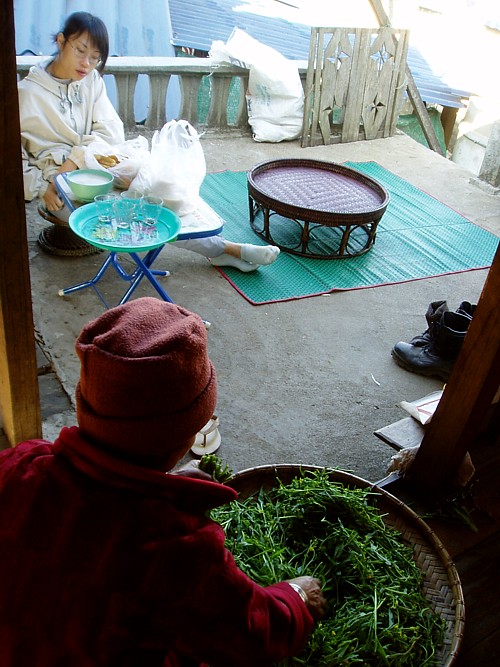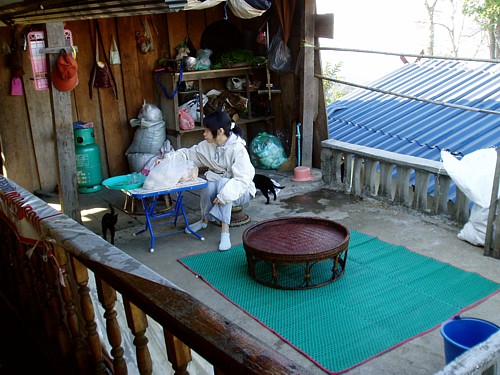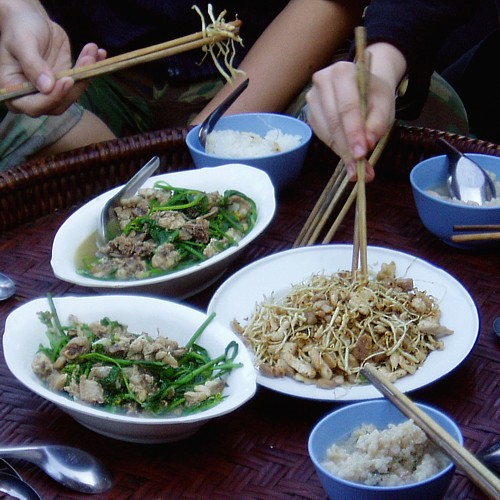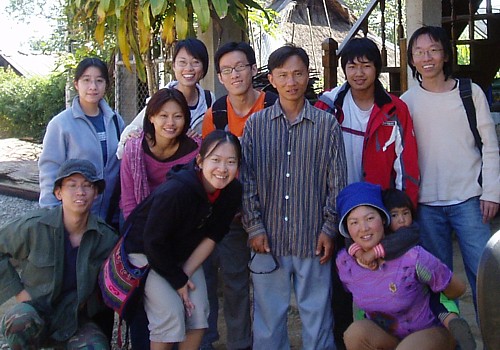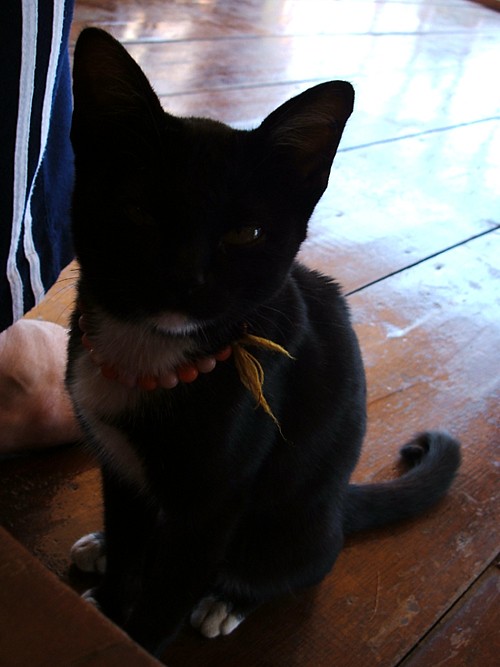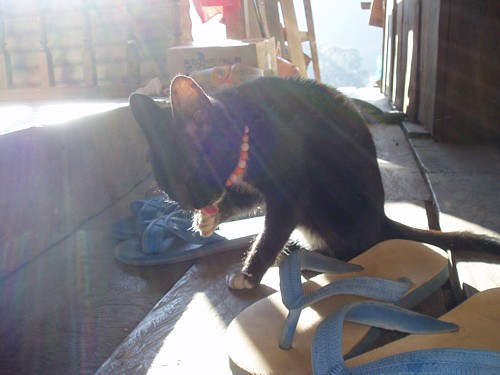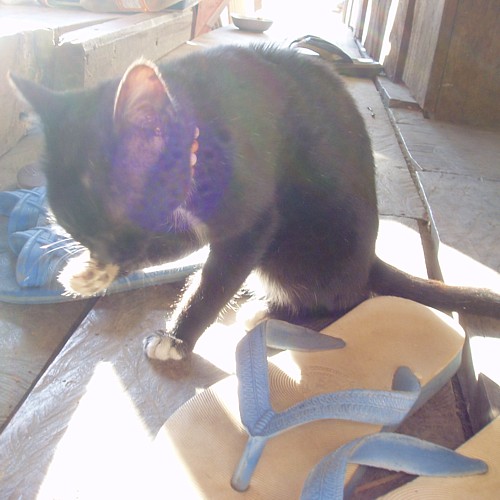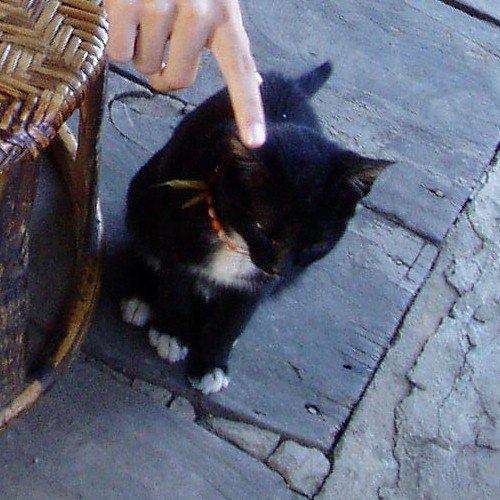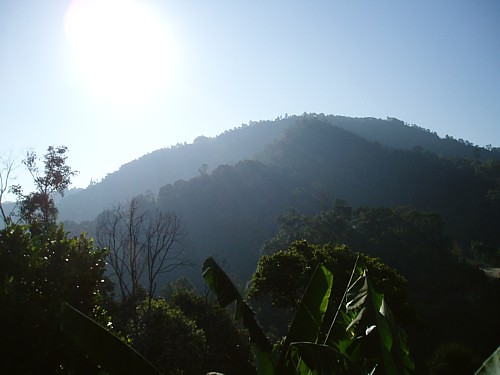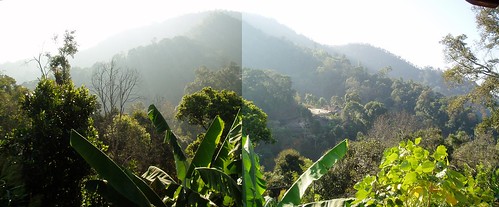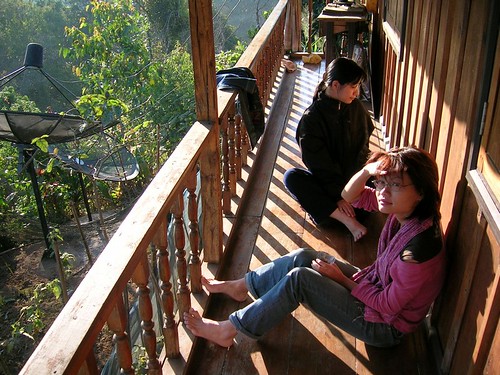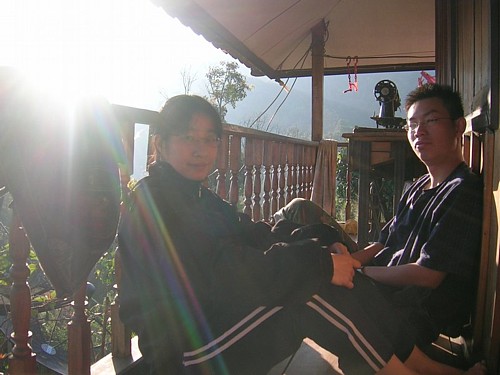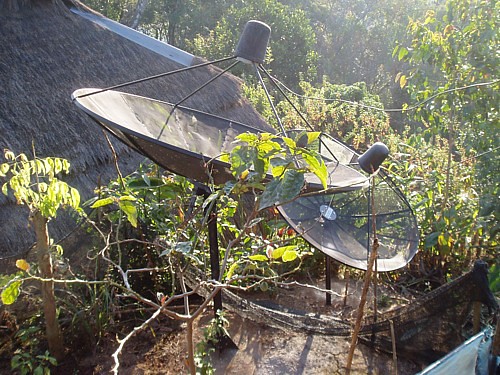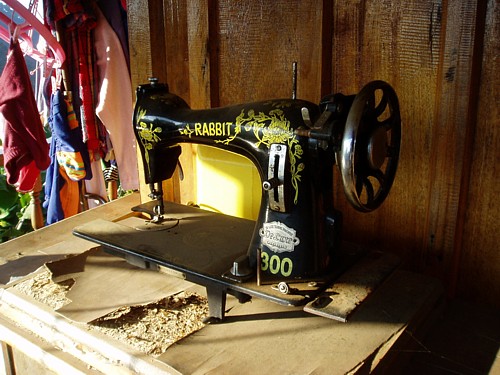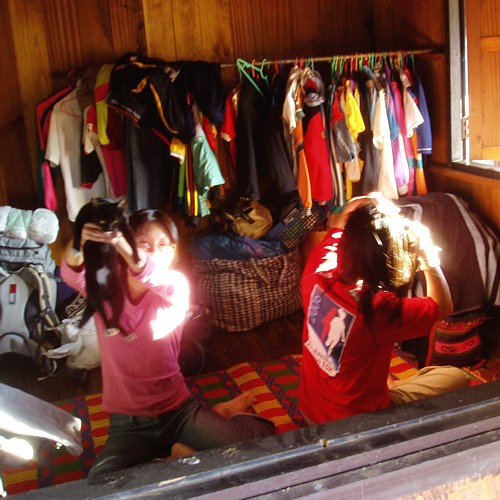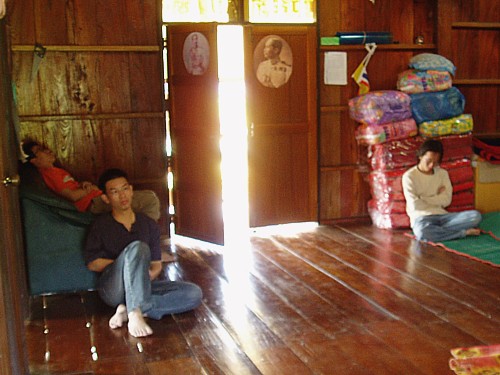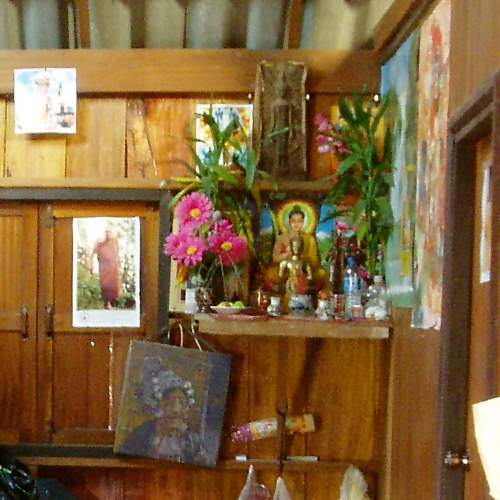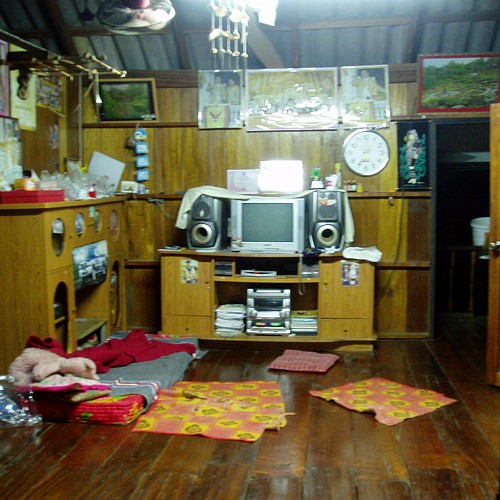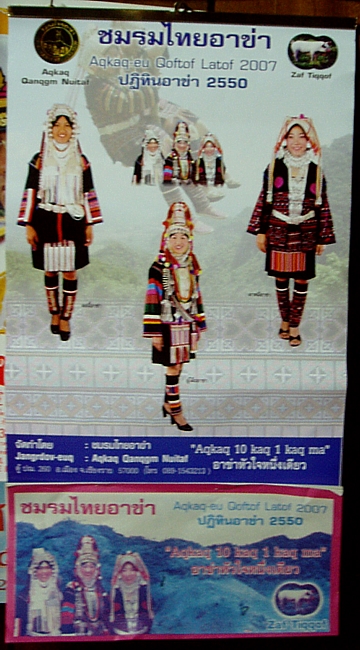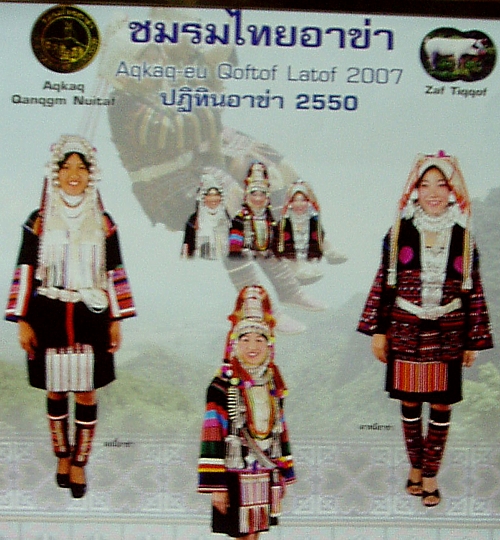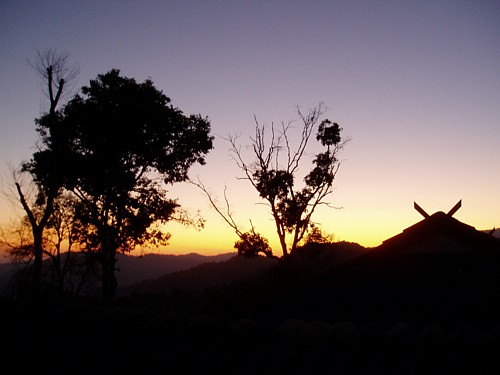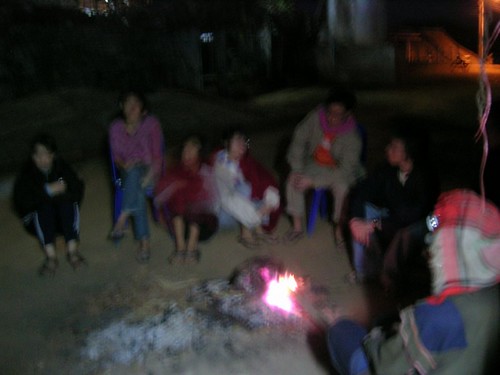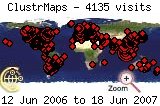A 'crash post' whipped up for the benefit of those who intend to spend time in Muang Ngeun, & also those who do not intend to but get stuck there after missing transport connections while crossing the border :P
Muang Ngeun (romanised as Muang Ngoen in Thailand) is a series of mostly Tai Lue villages spread out along 2 perpendicular roads:
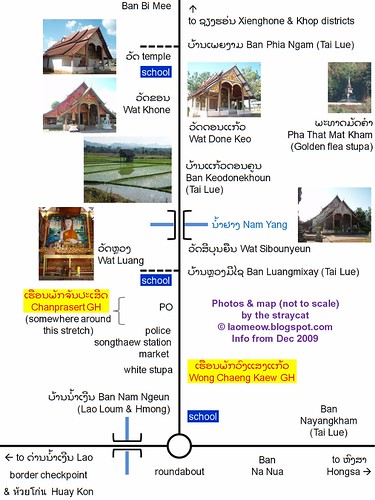 Click here for full size map
Click here for full size mapPlace names in Lao script (& Thai script for Huay Kon) are included so that those who don't speak Lao or Thai can point to them when asking locals for directions. For a rough idea of the non-existent scale, a slow walk from the white stupa to Ban Phia Ngam & back took ~5 hours, including a lot of time spent on taking photos, exploring the temples & talking to locals & listening to them explain about their temples.
The cat takes note of landmarks by photographing them, hence almost all government/military buildings are not shown in this map, & for the place labelled 'police' it can't recall what type - 'normal', border or 'interior security' - cos it had walked past facilities belonging to all three.
Guesthouses along the border-Hongsa road are not included as the cat didn't walk along that road. Three guesthouses are listed in the Sayabouly provincial tourism department
tourist info leaflet printed in August 2009 - Duangmala GH Tel. 020-2366793, Sai Nam Ngeun GH Tel. 020-2358687 & Deuamphen GH Tel. 020-2366931. Wong Chaeng Kaew GH seemed more like a truckers' stop, then again the cat met only 1 single other tourist in Muang Ngeun, who spent all of 10 minutes in town before heading to the border.
For transport info see
here.
Beyond the bridge over the Nam Yang at Ban Keodonekhoun there are pretty views across rice fields against a mountain backdrop. Unlike those in most of the rest of northern Laos, the fields here were flooded in the dry season reflecting the clouds in the sky above, & a new crop of rice was being planted. Tai Lue are known for their textiles & a few homes along the main road still had looms set up outside the house. There would be a cotton weaving fair at Ban Phia Ngam a few days after the cat's visit. Hmong New Year celebrations were already over for other places in northern Laos, but the kids at Ban Nam Ngeun school were still playing 'pov pob' (ball-tossing courtship game).
In late December 2009, almost all temples were under renovation, & the temple in Ban Phia Ngam was locked up. But this meant that the cat got to meet the majority of the adult population of Ban Luangmixay - who'd turned up in full force to repair & spruce up their temples (Wat Luang & Wat Sibounyeun). As the temples in Muang Ngeun are Tai Lue, they have long banners hanging from the rafters, & a set of wooden weapons on either side of the altar (either on the floor or placed high up in the rafters). To see this in other parts of Laos, one would have to travel to places like Ban Viengkeo in Hongsa, Muang Sing, rural Oudomxay province or Ou Tai & Ou Neua in Phongsaly.
From Wat Done Keo, Pha That Mat Kham stupa can be seen in the distance. The tourist info leaflet mentions it as the 'source to a nice fairy tale about a flea & a silver elephant', but the cat didn't have time to try & find a trail leading to it. Wat Sibounyeun (spelt as Wat Saliboun Nyeun on another signboard) has a huge Buddha statue within. Wat Khone (mentioned in the LP guidebook as Wat Ban Khon) was the prettiest of those that the cat managed to enter, with both interior & exterior walls covered by detailed paintings.
For those who wonder why some of the temple names don't match the village names - Ban Luangmixay was formed by the merger of Ban Luang (where Wat Luang is) & Ban Done Xay, & Ban Keodonekhoun was formed by the merger of Ban Done Keo (where Wat Done Keo is) & Ban Don Khoun.
Thank you to the following:
Thongsavanh & everyone at Wat Luang
Mankhian & the other guys at Wat Sibounyeun
the guys at Wat Done Keo
novice monk at Wat Khone
Muang Ngeun songthaew station ticket office lady
Craig Schuler
tools4fools
Ian Taylor
Monica of Jumbo GH, Hongsa
